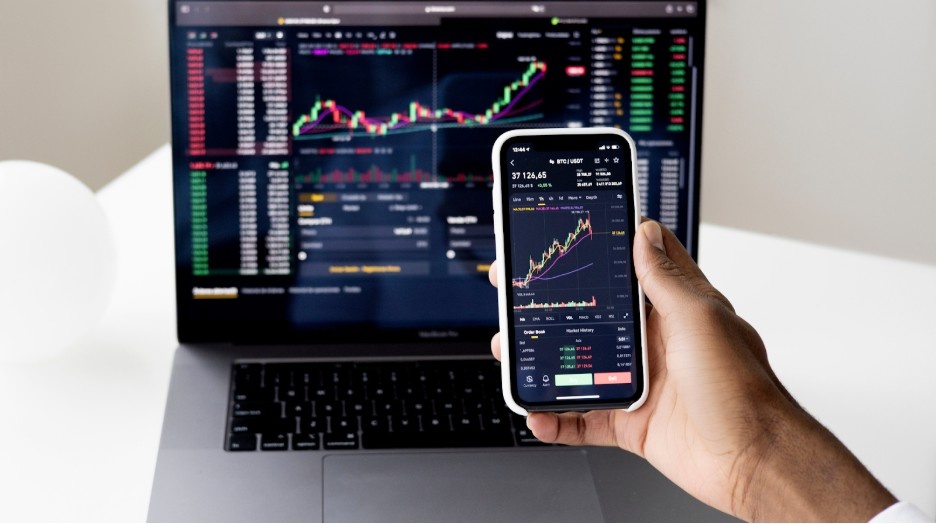If you’re anything like me, you’ve had those moments where you jump into a trade on impulse, hoping the market will just go your way.
Spoiler alert: it doesn’t always work out that way. I learned the hard way that trading isn’t just about picking the right stock—it’s about smart management.
Whether you’re diving into Ftasiastock or any other trading platform, effective management is the secret sauce that separates the successful traders from the wannabes.
Here’s my guide to mastering the art of trading management that will keep you calm, focused, and in control, no matter how wild the markets get.
Why Do You Need a Trading Plan?

A trading plan isn’t just some fancy spreadsheet or a bunch of numbers you’ll never look at again. It’s your blueprint for success.
Think of it as your roadmap for making smart trading decisions. Without it, you’re flying blind.
What Should Your Trading Plan Include?

You’ve got to define your financial goals first—are you in it for short-term gains or long-term wealth accumulation? Trust me, knowing the why behind your trades keeps you grounded and focused.
Then, set your entry and exit rules. Don’t just hop on a trade because you feel like it. Define specific conditions that trigger your moves.
This is where technical and fundamental analysis come into play. Make sure you have clear, data-backed reasons for each trade.
Next up, position sizing and risk management. Ask yourself: How much are you willing to lose per trade?
A common recommendation is 1-2% of your capital. It sounds like a small amount, but trust me, it adds up over time and keeps you from taking on too much risk.
And don’t forget: regularly review your plan. The market changes, and so should your strategy. Learn from your wins and losses—adjust when necessary.
How Can You Manage Risk Effectively?
Now, let’s talk risk. If you’re not careful, it can eat into your capital faster than you can say “margin call.”

What Are the Best Risk Management Practices?
Stop-loss orders: First off, always use stop-loss orders. These handy tools automatically sell your position if the price drops below a certain point, minimizing your losses. It’s like a safety net for your trades.
Position sizing: Next, let’s talk position sizing. Never risk more than you can afford to lose. Over-leveraging is a recipe for disaster.
The last thing you want is to put all your eggs in one basket and hope for the best. Spread your capital wisely across different trades and sectors to reduce exposure to a single point of failure.
Diversification: And let’s not forget about diversification. I know, it’s tempting to go all-in on that one hot stock, but the smart move is to spread your risk across different asset classes and markets.
A well-diversified portfolio can protect you against the volatility of individual stocks or sectors. But, hey, don’t overdo it. Too much diversification can dilute your returns and complicate your strategy.
Futures and Options (F&O): If you’re playing in Futures and Options (F&O), consider using hedging strategies.
Hedging can protect you from adverse price movements, giving you a cushion when the market turns against you.
How Do You Keep Your Emotions in Check?
Here’s a truth bomb: emotion-driven trading is a trader’s worst enemy. I’ve been there. The fear of missing out (FOMO) or greed can lead to some seriously poor decisions. That’s why emotional control is a must.

How Do You Control Your Trading Emotions?
First off, recognize your emotional triggers. Are you buying because you’re afraid of missing a rally? Are you holding onto a losing position because you’re too proud to admit defeat? Be honest with yourself—recognizing these emotional pitfalls is half the battle.
Next, stick to your plan. I get it, when the market gets wild, it’s tempting to react impulsively. But if you’ve already defined your entry/exit points, follow them. Don’t get swayed by the market noise.
Here’s a trick I use: take regular breaks. The market can be intense, and sometimes, walking away for a few minutes can clear your head and prevent knee-jerk reactions.
Lastly, keep a trading journal. Write down every trade, including your emotional state at the time. You’ll be surprised how much you can learn about yourself—and your trading habits—when you reflect on your decisions.
How Can You Keep Learning and Evolving?
One of the most important trading tips I’ve learned is that you never stop learning. The markets are always evolving, and so should you.

How Can You Continue to Improve Your Trading Skills?
Do your research: First off, do your research. Don’t just trade blindly. Dive into both technical and fundamental analysis to guide your decisions.
Use resources like TradingView for chart analysis or Bloomberg for financial news. The more you understand the forces driving the market, the better equipped you’ll be to make informed decisions.
Demo account: If you’re not sure about a new strategy or trade, use a demo account. It’s like practicing before you play in a real game. You can test strategies risk-free, so there’s no harm in experimenting.
Stay informed: And, of course, stay informed. The market can shift quickly, and it’s essential to keep up with global economic news, trends, and developments in your specific assets. Flexibility is key in a fast-moving environment.
Learn from your mistakes: Don’t be afraid to learn from your mistakes. Every loss is a chance to grow. Analyze your trades, figure out where things went wrong, and use that knowledge to refine your approach.
Need Some Help? Ask These Questions
Trading isn’t easy, and you’re bound to have questions along the way. Here are a few frequently asked ones:
How Do I Know When to Exit a Trade?
The best time to exit is when your predefined exit conditions are met. It could be a specific price target or a technical indicator. Stick to your plan—don’t let fear or greed push you to stay longer than you should.
Should I Always Use Stop-Loss Orders?
Yes, especially when you’re just starting. Stop-loss orders protect you from major losses and help you stay disciplined in volatile markets. They’re your safety net when things go south.
How Do I Control My FOMO in Trading?
FOMO can be tough, but you’ve got to remind yourself that there will always be another opportunity. Stick to your strategy and trust that your plan will guide you to success. Don’t chase trades out of fear of missing out—it leads to poor decision-making.
How Can I Learn More About Trading Strategies?
There are plenty of resources out there! Join online trading communities, take webinars, or find a mentor. Some platforms even offer demo accounts where you can practice different strategies without risking real money.
Wrapping Up: Trade Smart, Not Hard
Look, trading isn’t about being the loudest or the most aggressive in the room. It’s about being smart, disciplined, and continuously learning.
Implement these management tips for Ftasiastock or any trading platform, and watch your skills grow. Stay calm, stick to your strategy, and the profits will follow.
Remember, slow and steady wins the race. So, take a deep breath, trust your plan, and let the market do its thing. You’ve got this!

